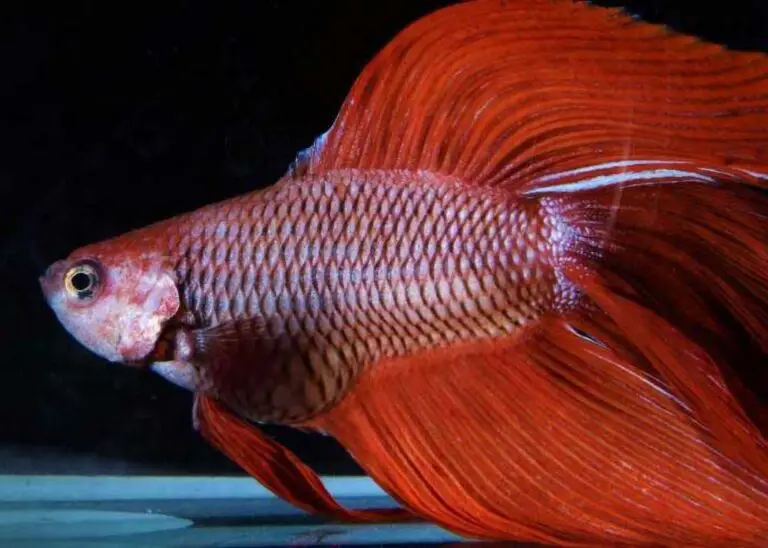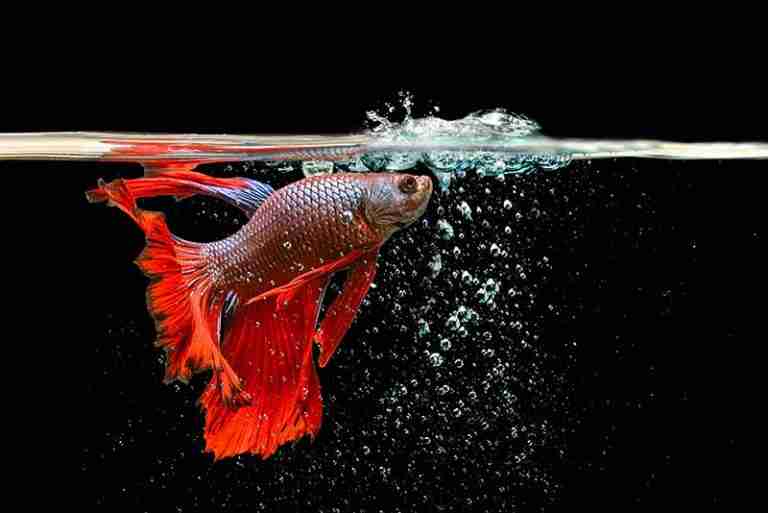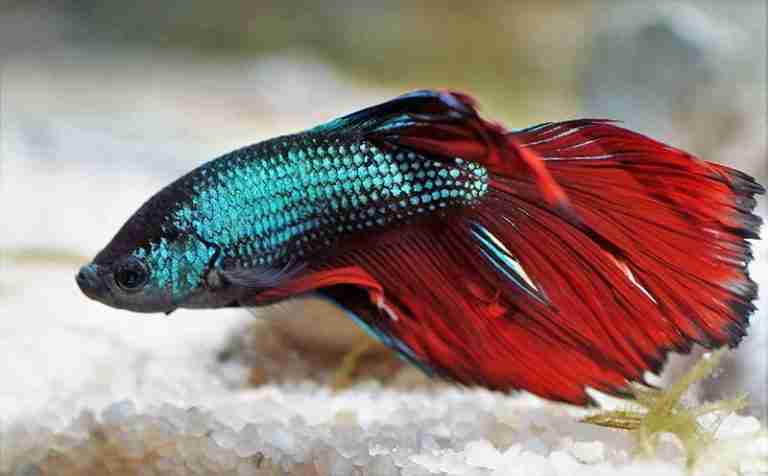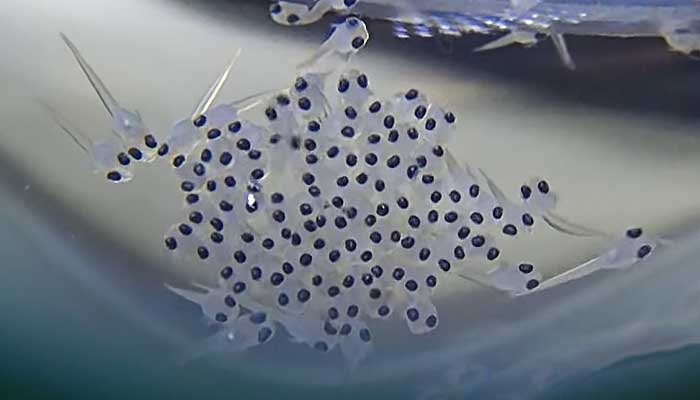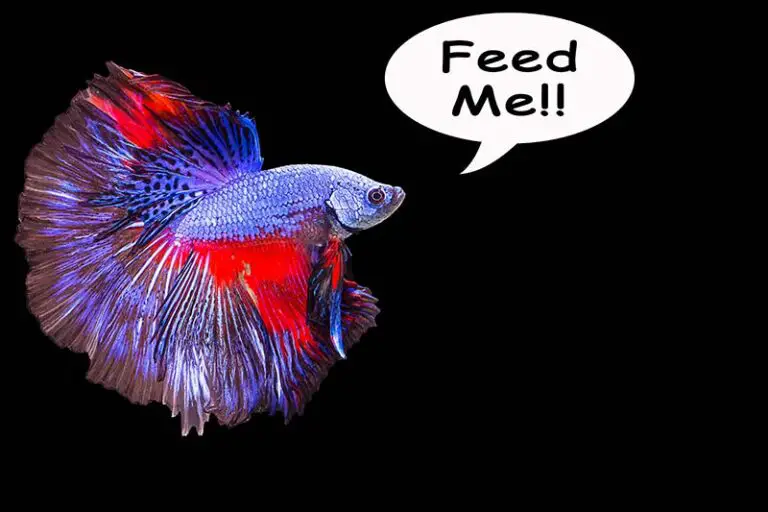Do Betta Fish Grow (Main growth factors explained)
Whether you are considering getting your first betta fish or have already set up its tank, one thing you need to know is, “Do betta fish grow?” as you may need a bigger tank!
Several factors affect how big betta fish grow, or even how fast they grow, which I cover in this short article. If you have any questions about a bettas growth rate or how to make your betta fish grow bigger, keep reading to learn the answer.
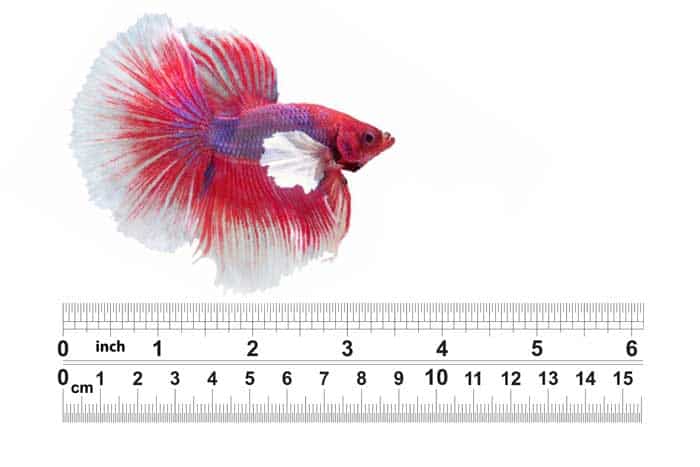
Betta Fish Growth Chart
As this article answers the question “Do betta fish grow?” it’s a good idea to start by discussing a betta fish’s growth stages. Below is a betta fish growth chart with average sizes at each stage of its life.
| Betta Age | Approximate Size |
|---|---|
| Birth | 0.03 inch (0.08cm) |
| 1-2 weeks old | 0.2 inch – 0.25 inch (0.5cm – 0.64cm) |
| 3-5 weeks old | 0.35 inch – 0.6 inch (0.89cm – 1.52cm) |
| 6-8 weeks old | 0.85 inch -1.3 inch (2.16cm – 3.3cm) |
| 9-12 weeks old | 1.55 inch – 2.1 inch (3.94cm – 5.33cm) |
| 12-24 weeks old | 2-2.5 inches (5.08cm – 6.35cm) |
| 24-48 weeks old | 2.5-3.5 inches (6.35cm – 8.89cm) |
Although the sizes above are typical, some factors can cause a betta fish to grow bigger or smaller, which include:
- The quality of care your betta receives.
- The size of your betta tank.
- The genetics of your betta fish.
- Your betta’s diet.
- The general health of your betta fish.
- Water Quality
- Water Temperature
We will look at some of these factors later in this article.
Betta Fish Growth Stages
The betta fish’s growth stages occur from birth (as fry) until fully developed. There are several stages to a bettas growth cycle which you will find in the table below.
| Betta Age | Main Growth Characteristics |
|---|---|
| Birth to 1 week | They Will stay near the top of the tank, are very transparent, and lack fins. |
| 1-2 weeks | Tail growth and dorsal fin beginning to form. |
| 3-5 weeks | Growth spurt, the body has almost doubled in size, and some coloring is showing. |
| 6-8 weeks | Color is more defined and further fin growth. |
| 9-12 weeks | – Female fins are usually fully grown. – Male fins continue to grow. – Become sexually active. Males should be removed from the tank and placed in separate tanks before aggression shows. |
| 13-16 weeks | Color continues to develop in some males with further fin growth. |
| 17-20 weeks | Males should be close to fully developed fins depending on the variety. Longer finned betta can take 6-10 months for full development. |
Throughout your betta’s growth stages, you should give them a high-quality diet and monitor their health closely to provide them with the best chance of survival and a healthy lifespan.
How Fast Do Betta Fish Grow
Baby bettas generally grow quickly, but their growth rate will slow as they reach adulthood. Most fully grown betta fish are around 6 months old, but male bettas can take up to 12 months to fully develop their fins. Some factors can affect a betta fish’s growth rate, such as the quality of its diet and water conditions.
As I mentioned above, there is a slight difference in how fast male betta fish grow compared to female bettas. Male betta fish have much larger fins and plumage, which make up a large portion of their size and takes much longer to grow.
How Big Do Bettas Get?
You can see from the charts above that most of a betta’s growth will occur during the early stages of life, so how big do bettas get when fully grown, and what are the main factors that will impact their growth?
The sizes I am discussing throughout this article relate to average betta fish, but a reasonably new variety has been bred: King bettas. King betta fish are slightly larger and usually measure around 3 – 4 inches when fully grown. King bettas also have much thicker bodies and larger fins.
How Big Do Male Betta Fish Get?
Male betta fish typically reach an average length of 2.5 – 3.5 inches when fully grown, with the majority falling in the middle of this range. The record size for a male betta fish is 4 inches, but this is quite rare.
A large amount of male bettas’ size is made up of their fins, which can grow to be around 1/3 of their total length. So, if you see a betta with very long fins, he is likely a fully grown adult.
How Big Do Female Betta Fish Get?
Female betta fish typically reach a length of 2 – 3 inches when fully grown, with the vast majority falling in the middle of this range.
The main difference between male and female bettas is that females have much smaller fins than males. Female bettas tend to reach full size much earlier, although both males and females become sexually mature at around 6 months of age.
How Big Do Betta Fish Get In The Wild?
Betta fish growth rate and size do not differ in the wild compared to bettas in captivity. The main difference is that wild bettas tend to have shorter fins and less unusual coloration due to the lack of selective breeding in the wild.
The typical size for a wild betta fish is 2 – 3 inches, with males on the larger end of this range and females on the smaller end. There is also less chance of wild betta suffering from stunted growth, which can be caused by a tank that is too small. A bettas natural habitat also provides the best food sources.
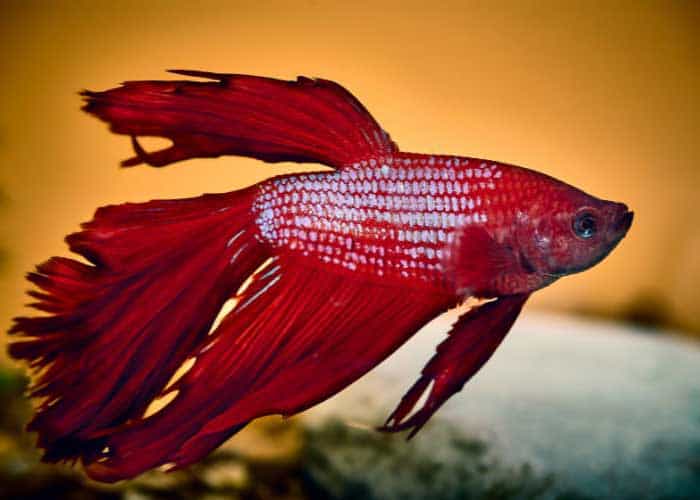
The main difference between betta fish living in their natural habitat is their lifespan. A wild betta fish’s lifespan is often significantly shorter than those in captivity because of regular aggressive confrontations with other betta fish. In captivity, it is advised to keep male betta fish in separate tanks.
Bettas that live In community tanks are usually mixed with smaller, less aggressive fish species.
How to Make Your Betta Fish Grow Bigger
If your betta fish doesn’t seem to be growing very much, it could be genetic, which you cannot change, or maybe there is a problem with the water conditions or diet.
Let’s look at how you can make your betta fish grow bigger.
Diet
One of the most common reasons for a betta not to grow properly is because they are not getting enough food. In the wild, bettas would eat small insects and larvae, but in captivity, they are usually fed pellets or flakes, which don’t contain as much nutrition.
It’s important to give your betta a varied diet to ensure they get all the nutrients they need for proper growth.
- Bloodworms
- Blackworms
- Mosquito larvae (no more than one per week)
- Frozen brine shrimp and daphnia
- Cut up pieces of earthworm or nightcrawler
All food types above can be given as live food, or you can buy frozen or freeze-dried for convenience. Live food has the highest nutritional value, while good quality frozen food is also quite nutritious. If you opt for freeze-dried food, it has the lowest nutritional value, but its treatment makes it less likely to carry harmful parasites or diseases.
Betta fish are omnivores, but protein makes up a large part of their diet and will profoundly impact their growth rate. Vegetation is necessary to aid a betta’s digestion which will help reduce the chances of betta constipation.
Softened or blanched peas are a great source of vegetation and are also suitable for easing digestive issues, or you can provide lettuce leaves and small portions of shredded, soft fruits.
A good quality betta fish food can provide many of the nutrients necessary, but for the best growth, you should always supplement a bettas diet with live or frozen foods (especially when they are young).
Water Quality
Another common reason for stunted growth is poor water quality. If the water in your tank is not clean, it can cause problems with your betta’s digestion and absorption of nutrients, leading to stunted growth.
Poor water quality can often carry less oxygen, affecting your betta fish’s metabolism and causing slow growth. If there are signs that your betta fish tank is low in dissolved oxygen, regular water changes will help, or my article: How Do You Oxygenate A Fish Tank will give you some useful tips to resolve the problem.
Juvenile bettas are also known to release a growth-inhibiting hormone (GIH) intended to limit other betta fish’s growth potential, giving them a better chance of being the larger, dominant fish. If a tank is too small, a betta will be exposed to the GIH, limiting its own growth potential. Regular water changes will remove most growth-inhibiting hormones from the water.
It’s important to test the water in your tank regularly and make sure the parameters remain within the safe range for bettas. You can read our article on betta fish care to find the correct water parameters. Read my article explaining how often to change betta water for more information.
Water Temperature
The water temperature in your betta tank can also impact your betta’s growth. Water that is too cold can slow a betta’s metabolism and make it harder for it to digest food correctly, both of which can lead to stunted growth.
For maximum growth, betta fish water temperature should be between 78° to 80° Fahrenheit (25.5° – 26.7° Celsius). If the water in your tank is outside this range, you will need to take steps to raise or lower the temperature as appropriate.
Betta Tank Size
A tank too small for your betta can also impact its growth. Many people wrongly believe that betta fish are happy in small spaces, but this is untrue. So how big should a betta fish tank be? Personally, I wouldn’t recommend a tank smaller than 5 gallons, and if you have the space, 10-15 gallons for a single betta fish is perfect.
A tank that is too small will cause stress to your betta fish, and stress will impact not only a betta’s growth but also its general health. If you notice unusual horizontal stripes developing on your betta’s body, these are called stress stripes and are a sure sign of stress.
I also explained above that betta fish release a growth-inhibiting hormone. If they are in a small tank, they will be exposed to high levels of their own growth-inhibiting hormone, which will likely cause stunted growth.
Wrap Up
As you can see, quite a few factors can impact a bettas growth rate and maximum size. Unlike some larger fish species, the difference between a full-size betta fish and one with restricted or stunted growth is not huge.
Baby betta fry requires good food and a healthy environment for the best growth, and even at the juvenile stage, they will need a protein-rich diet for continued growth. A betta usually stops growing at the adult stage, so this is the best time to supplement their diets with fish flakes and pellets.
If your betta is a healthy fish, it should grow naturally without any problems. Still, if you notice that your betta fish growth rate appears slower than the typical suggested in this article, you should take note of the factors that could impact its growth. You can often fix potential issues relatively quickly and get your betta growing again.
I hope this article has been helpful.


